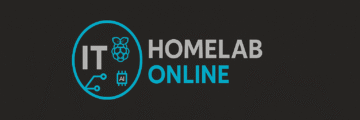Ventoy is a free, open-source tool that makes it easy to create a multi-OS bootable USB drive. Instead of carrying separate USB sticks for each operating system, Ventoy lets you store multiple Windows and Linux installers on a single USB and choose which one to boot from a simple menu. In this step-by-step Ventoy tutorial, I’ll show you how to download and install Ventoy, prepare your USB stick, add ISO files for Windows 10, Windows 11, Windows Server, Ubuntu, Kali Linux, and more, and then boot directly into the installer you need. Perfect for IT pros, home lab builders, and tech enthusiasts, this method saves space, time, and hassle.
🎥 Watch the Video Tutorial
💡 Why Ventoy?
Before Ventoy, I had a separate USB stick for each operating system — it was bulky, wasteful, and inefficient.
With Ventoy, you can store multiple OS installers on one USB and select the one you want to boot from a simple menu.
Popular choices include:
- Windows 10
- Windows 11
- Windows Server 2022 / 2025
- Ubuntu
- Kali Linux
- …and more!
Tip: Use a USB size large enough for your needs. I recommend 64GB so you can fit several operating systems plus extra tools.
Ventoy also supports persistence (saving changes between live sessions), but that’s beyond today’s tutorial.
🖥 The Test Machine
For this example, I’m using a 5-year-old Dell laptop — proof you don’t need the latest hardware for a great home lab.
Why laptops work well for labs:
- Built-in UPS (battery)
- Portable for working anywhere
- Easy to refurbish and repurpose
📥 Step 1: Download Ventoy
- Go to the official Ventoy download page:
https://www.ventoy.net/en/download.html - Download the version for your operating system. (I’m using Windows 11 64-bit.)
📂 Step 2: Extract the Files
- Open your Downloads folder.
- Right-click the Ventoy ZIP file → Extract All → use the default location.
- Open the extracted ventoy-version folder.
- Double-click Ventoy2Disk.
⚠ Step 3: Install Ventoy to Your USB Stick
When prompted by User Access Control, click Yes.
Warning: Ventoy formats the USB drive and erases all data. Unplug other USBs to avoid mistakes.
- Select the correct USB device.
- Click Install.
📁 Step 4: Organize Your USB
Create folders to keep things tidy:
- ISO – store OS installers.
- Software or Downloads – keep apps and drivers.
- Persistence – for Ventoy’s persistence feature.
Copy your favorite OS ISOs into the ISO folder.
🚀 Step 5: Boot from Ventoy
- Reboot your computer and enter the Boot Menu.
- Dell: Press F12
- Other brands: check your boot screen or search online.
- You may need to enable USB boot in the BIOS.
- You will need to disable Safe Boot as Ventoy does not meet the requirements for safe boot
Once booted, Ventoy will display its menu — just pick your ISO and start installing.
✅ Conclusion
That’s it! You now have a multi-OS bootable USB ready to go. Perfect for tech work, home labs, and IT troubleshooting.
📺 Watch the full video guide here: https://youtu.be/lgaRN2OFMk0
If you found this helpful, like and subscribe to IT HomeLab Online on YouTube for more tutorials.
